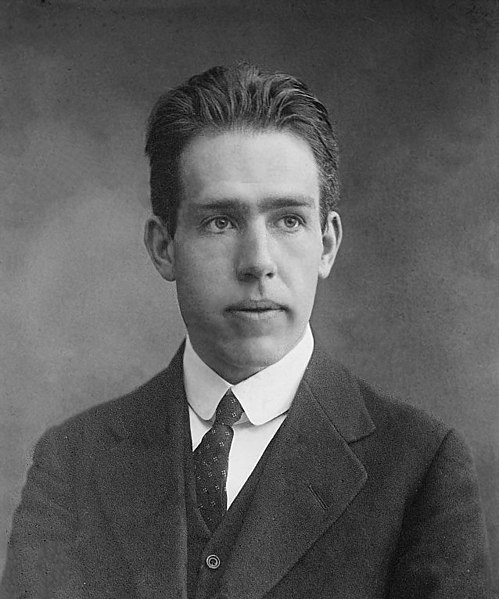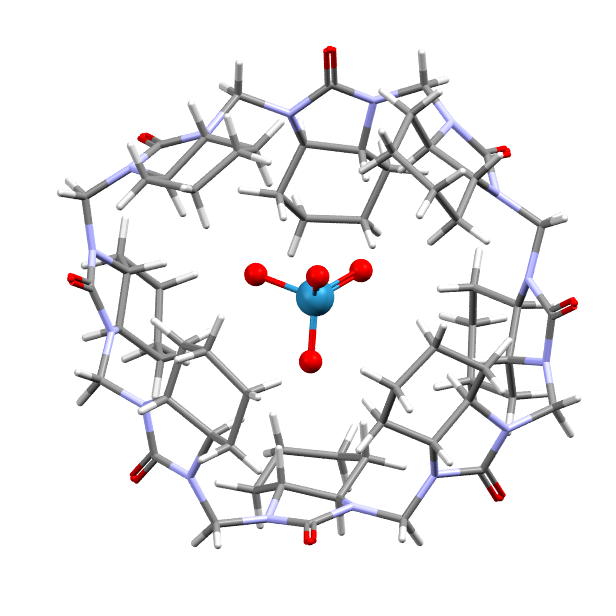Bohrium
Bohrium:

An image of Niels Bohr, for whom Bohrium is named.
Facts about Bohrium:
- Bohrium: Bohrium is a synthetic element so its properties are unknown, but it is expected to behave like Tecnicium (also a synthetic element) and Rhenium.
- Fun fact about Bohrium: Bohrium is named for physicist Niels Bohr who was a pioneer in atomic theory. Bohrium is extremely radioactive and the most stable known isotope, 270Bh, only has a half-life of about one minute.
- Chemical symbol: Bh
- Atomic number: 107
A crystal structure celebrating Bohrium:

Rhenium (cyan sphere) is surrounded by four oxygen atoms (red spheres) in what is known as the perrhenate anion. Here it sits inside a cage-like molecule known as a cucurbituril.
Facts about this structure:
- Formula: C64 H96 N16 O8,C16 H36 N +,1.75(C H4 O),O4 Re –
- Structure name: tetra-n-butylammonium cycloocta(1-methylene-(octahydro-2H-benzimidazol-2-one-3-yl)) oxido-trioxo-rhenium(vii) methanol solvate
- Fun fact about the structure: The large cage-like molecule in this structure was used to selectively capture smaller ionic molecules like perrhenate. Perhaps someday a molecule like this will capture perbohrate!
- CSD refcode: ECAFAS (What’s this?)
- Associated publication: Sandra Kaabel, Jasper Adamson, Filip Topić, Anniina Kiesilä, Elina Kalenius, Mario Öeren, Mart Reimund, Elena Prigorchenko, Aivar Lõokene, Hans J. Reich, Kari Rissanen, Riina Aav, Chemical Science, 2017, 8, 2184, DOI: 10.1039/C6SC05058A
More about Bohrium:
Element 107 is named for Niels Bohr, who won the Nobel Prize in Physics for his contributions to atomic theory and quantum physics. Bohrium belongs in Group 7 of the Periodic Table and is expected to behave like other members of that group.
Learn More About the International Year of the Periodic Table (IYPT) in Crystals Project:
This project (#IYPTCrystals) is part of the International Year of the Periodic Table celebration (#IYPT2019), read more about the project here.
You can follow us on social media; search for #IYPTCrystals or follow The CCDC on X @ccdc_cambridge on Facebook ccdc.cambridge, on Instagram ccdc_cambridge or on YouTube CCDCCambridge.
Understand some of the terms and concepts used with our Frequently Asked Questions page here.
A 3D visualization showing Bohrium in real crystal structures: